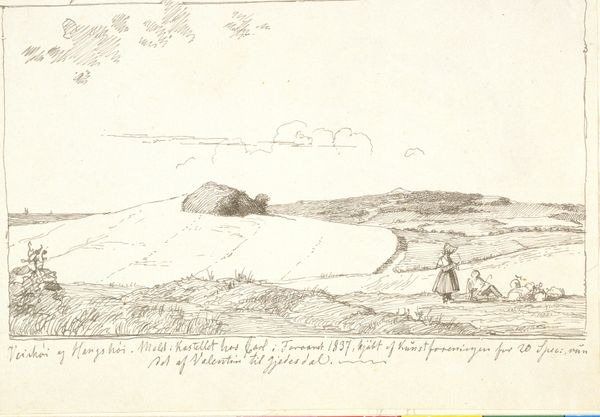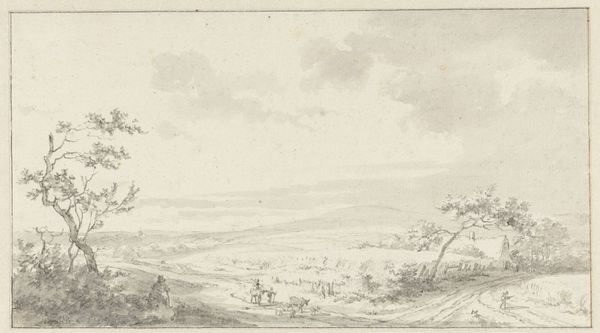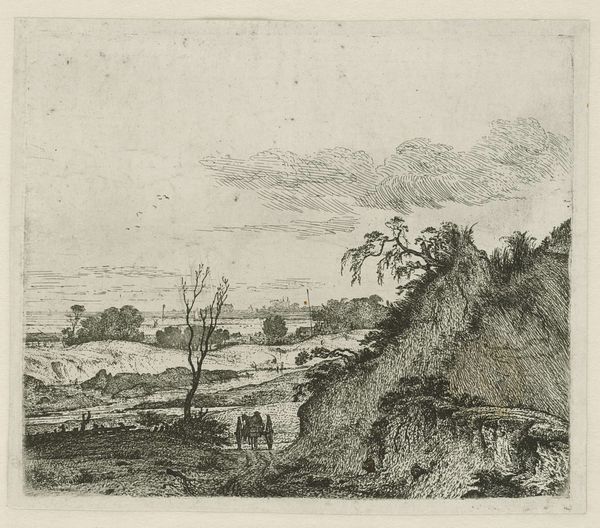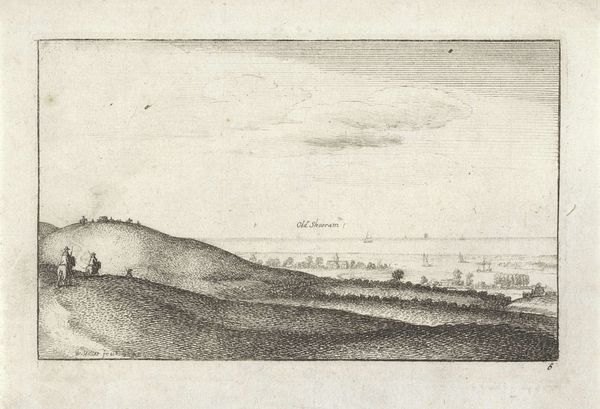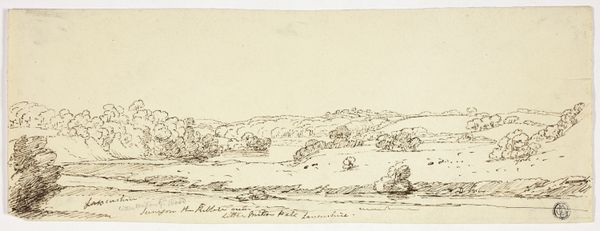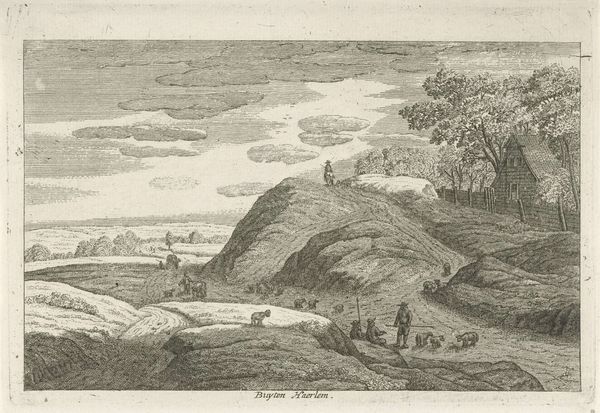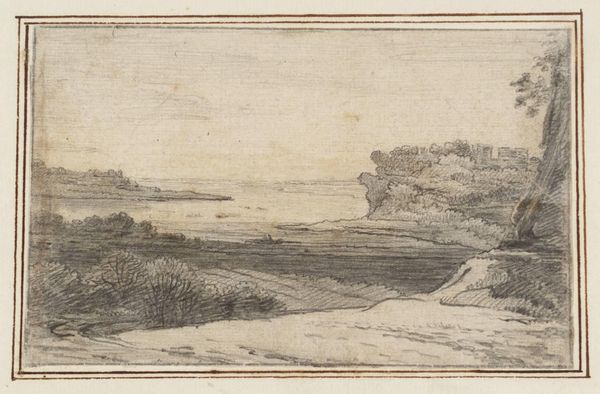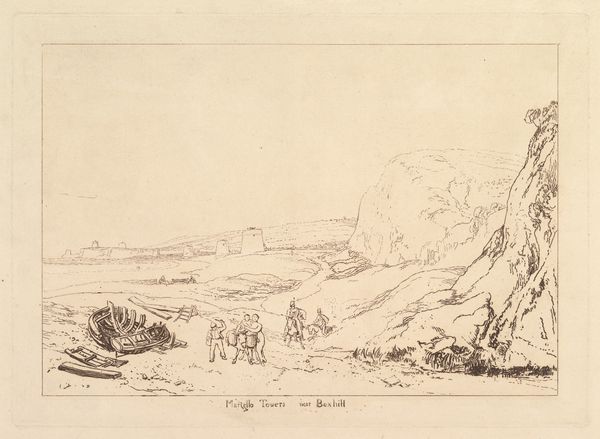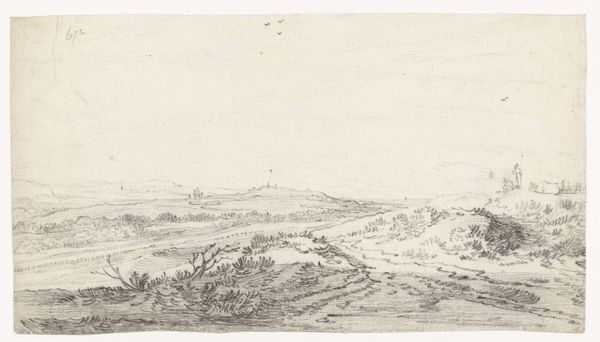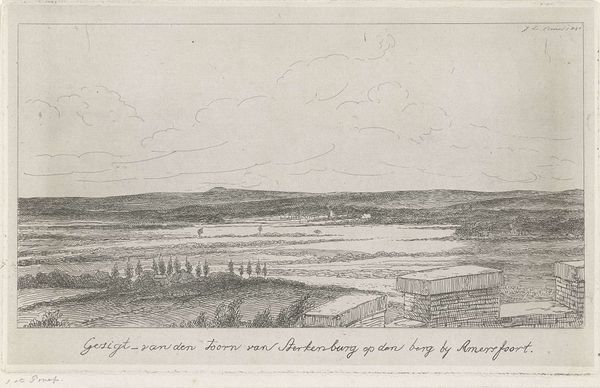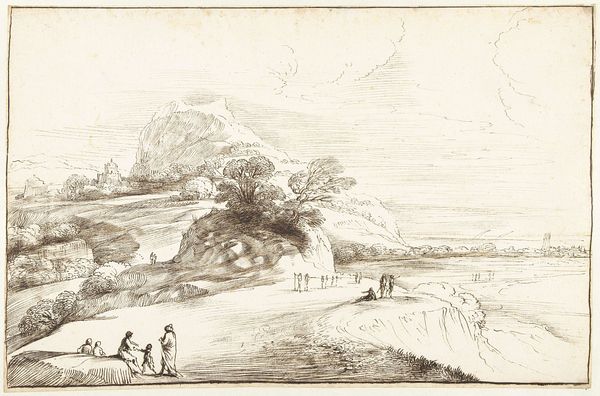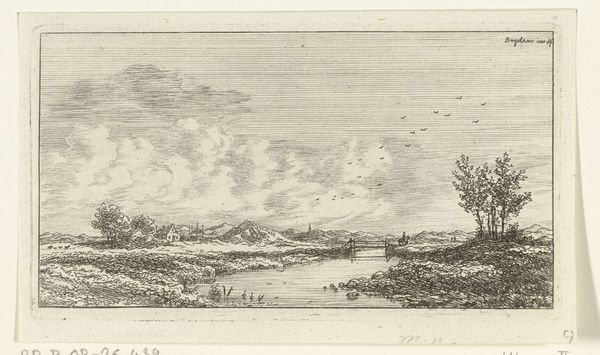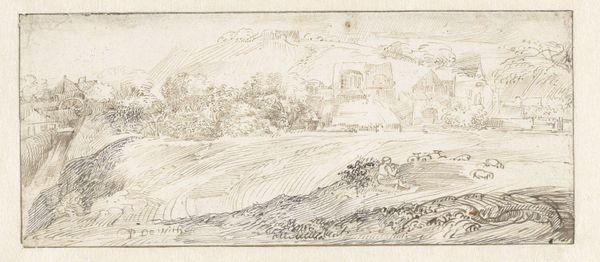
Sjællandsk landskab. I baggrunden Vejrhøj, indklæbet f.n. side 6 1837
0:00
0:00
drawing, pencil
#
drawing
#
pencil sketch
#
landscape
#
romanticism
#
pencil
#
line
#
realism
Dimensions: 116 mm (height) x 167 mm (width) (bladmaal)
Curator: Take a look at this pencil drawing, “Sjaelland Landscape. In the background Vejrhøj, pasted in from page 6," created in 1837 by Johan Thomas Lundbye. It's currently held at the SMK, the National Gallery of Denmark. Editor: It’s so simple, almost dreamlike. There’s a quietness, a stillness that just settles over you. The sparse use of line actually enhances the sense of space. I am quite intrigued by this landscape. Curator: Lundbye was a key figure in the Danish Golden Age, embracing Romanticism while anchoring himself in Realism through close observation. The landscape, focusing on Vejrhøj, which is this prominent hill, it speaks to the Romantic era’s interest in nature as a space of sublime encounter. Editor: Right, and landscapes in general throughout art history serve to position humans in the environment but they equally represent land as a sight, land as property, territory and nationhood. Do we know whose property this specific vista used to be? I suppose it relates to the relationship between humankind and nature at this precise historic juncture. Curator: Yes, definitely, landscapes carry those layered meanings. This piece also brings to mind the influence of nationalism at that time; the celebration of the Danish countryside becoming entwined with cultural identity. And it does capture Denmark! Those muted tones, the gentle slopes... Editor: Exactly, but there's something else here. Those tiny figures—what are they doing? A woman standing, and what looks like people resting or working in the fields... they speak to labor, to class distinctions, to gendered roles within this landscape. We’re talking about life in rural Denmark, perhaps seen through an idealized lens, or simply through a bourgeois eye. Curator: That tension between observation and interpretation really resonates. The drawing becomes a stage where these social dynamics quietly play out against the vastness of nature. Editor: A space of leisure, yes, for some—and of work, and potential marginalization, for others. It reminds me of contemporary discourse in feminist geography on issues of environmental exploitation but it is not quite the same. Lundbye is certainly offering a tableau that has embedded assumptions related to land ownership and societal norms. It is indeed revealing, isn’t it? Curator: It's fascinating how much we can unpack from such a seemingly simple sketch. He created this quiet image which whispers about the relationship between us, the land, and one another, as a community. Editor: This image offers us, certainly, a landscape to ponder over the shifting meanings we attribute to our territories.
Comments
No comments
Be the first to comment and join the conversation on the ultimate creative platform.
